By Dixita Patel
Recent advances for pacemaker technology include improved electronics and smaller batteries, making the development of leadless cardiac pacemakers (LCPs) possible. An LCP is a self-contained (capsule-like) generator and electrode system that eliminates the need for pocket or transvenous leads that often cause malfunctions. The current LCPs on the market pace at a single location of the heart, but for patients who require more than single-chamber stimulation, a multinode LCP system (Figure 1) can be used. Multinode LCP systems require synchronization between all of the implanted devices to function properly. However, the standard communication techniques used may be unsuitable due to constraints in terms of power consumption and size.
To help make the system and communication more efficient, researchers at MicroPort CRM are using simulation to investigate these design challenges using galvanic intrabody communication (IBC). IBC provides a power-optimized solution to facilitate communication between devices, which in turn helps to synchronize multinode LCP systems.
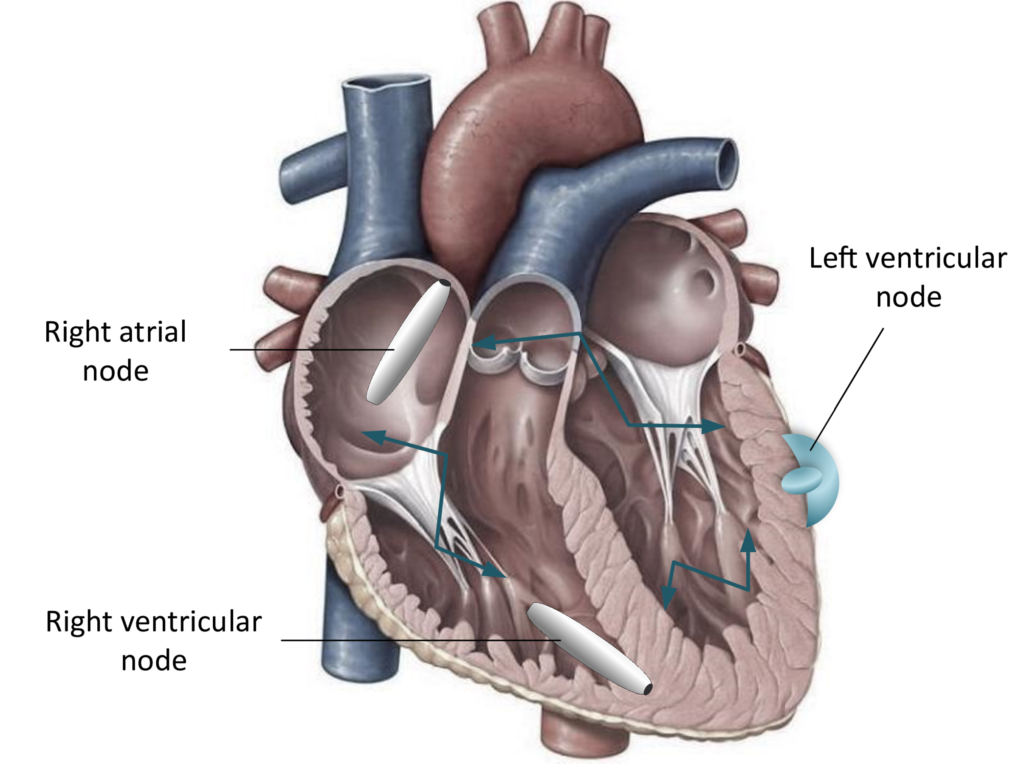
Intrabody communication transceivers for LCP applications
Intrabody communication (IBC) is a near-field communication method that uses an electrode pair to send an impulse through body tissue to a second electrode pair that receives the signal. This method works with ultralow power, and no additional antennas are needed because the electrodes used for pacing also provide the electric field for the communication.
Mirko Maldari, an electronic engineer at MicroPort CRM, and his team proposed a new methodology to further characterize these types of communication channels. “With IBC, because electrodes are used to communicate [instead of coils and antennas], we can optimize both power consumption and size,” said Maldari.
In their research, an in vivo study was performed using a system that consisted of two capsules that were implanted in the right atrium and right ventricle of a heart shown in Figure 1. Further analyses involved the COMSOL Multiphysics software to measure the attenuation of the channel and estimate how much power is dissipated in the tissue.
Analyzing IBC pathloss with simulation
The team at MicroPort collaborated with Synopsys Inc., an electronic design automation company, using the Synopsys Simpleware software to develop a model of a human torso that would be importable into the COMSOL Multiphysics software (Figure 3). The model is based on a validated human phantom from IT’IS Foundation Zurich; more specifically, the “Duke” model, which represents a 34-year-old male.
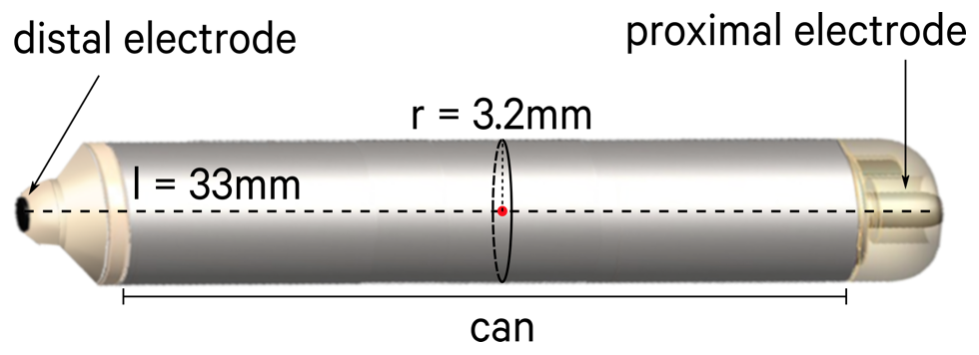
The geometrical model was created to include organs, muscles, bones, soft tissue, and cartilage. After importing into COMSOL Multiphysics, an approximated version of the heart chambers was built to distinguish heart muscle from blood. Maldari said: “It was important for my application for these features to be included because they have different electrical properties.” The team then designed two identical LCP capsules in COMSOL Multiphysics to estimate the attenuation levels of the intracardiac channel.
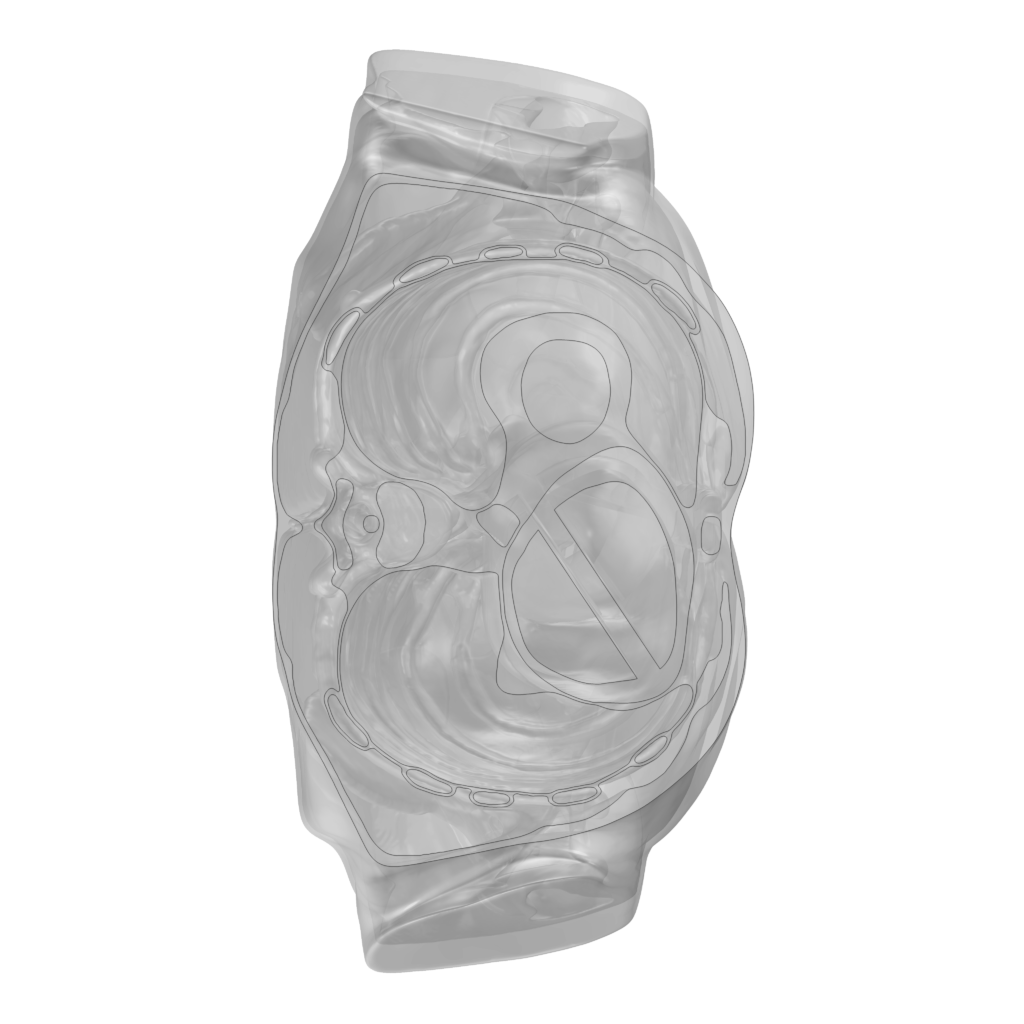
The capsules were studied at two different orientations, both at a channel distance of 9 cm. Simulations were performed with a quasistatic approach using the Electric Currents interface in the AC/DC Module, an add-on product to COMSOL Multiphysics, to calculate the channel attenuation in a frequency range between 40 KHz and 20 MHz. The results in Figure 4 show the positions of the right atrium (RA) capsule of the worst-case scenario (perpendicular) and the best-case scenario (parallel). The best-case scenario shows a higher differential voltage across the receiving dipole. The attenuation levels of both scenarios can be seen in Figure 5, where the difference is ~11 dB. From 40 kHz to 20 MHz, the attenuation decreases by ~5 dB for both cases. From the results, Maldari and his team were able to verify that relative position and orientation of the capsules strongly impacts the channel attenuation.
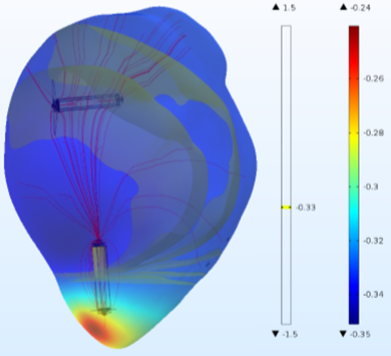
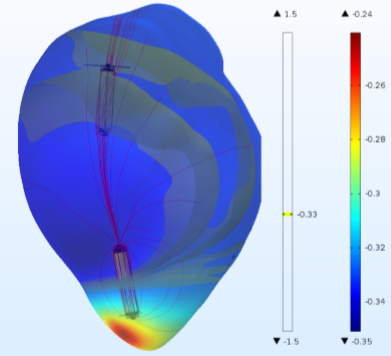
For MicroPort, it was important to estimate the attenuation levels before preparing the prototype. “As researchers and scientists, we try to reduce the amount of animal trials, and simulation has allowed that,” said Maldari. “It is a powerful tool to estimate the behavior of the signals within biological tissues before investigating them experimentally.” The use of simulation allowed the team to define accurate models for galvanic IBC communication and optimize transceivers for LCP systems.
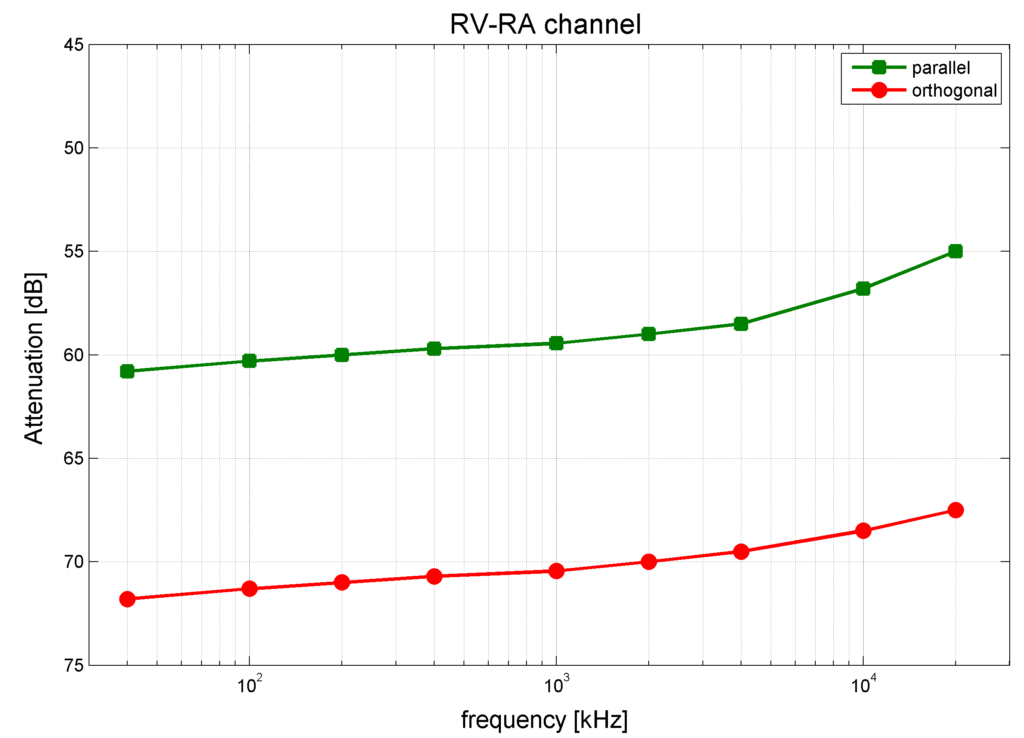
Future plans for IBC
MicroPort’s future plans involve further studies, where the effect of certain input parameters — such as the electrode size and dipole lengths — on a more complete set of electric field parameters will be investigated. This would help them point out the attenuation difference between diastolic and systolic periods. As of now, the researchers are working on the design of an ultralow-power receiver for LCP synchronization purposes. The new receiver could potentially mark groundbreaking innovation for dual-chamber pacemakers.
COMSOL
www.comsol.com
Reference
Maldari, Mirko, et al. “Wide frequency characterization of Intra-Body Communication for Leadless Pacemakers”, IEEE Transactions on Biomedical Engineering, vol. 67, no. 11, pp. 3223–3233, 2020.
Synopsys and Simpleware are trademarks and/or registered trademarks of Synopsys, Inc. in the U.S. and/or other countries. COMSOL Multiphysics is a registered trademark of COMSOL AB.


Leave a Reply
You must be logged in to post a comment.